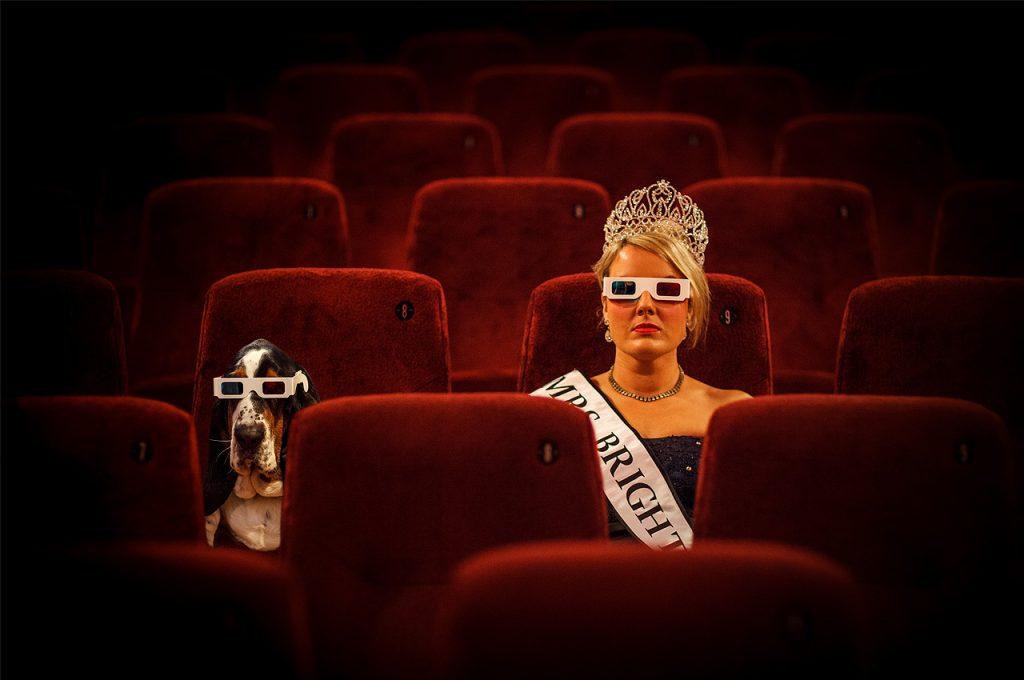It started when I began entering my basset hound into championship dog shows. He’d won everything on the amateur circuit, but when we progressed to the championships he kept coming last. Out of guilt, protest and necessity, I decided to put myself under the same level of scrutiny and became a beauty queen.
All of this was for my theatre show, Major Tom, which follows my own journey and my dog’s as we get to Crufts and the Mrs Galaxy UK finals. It was a study of in-group behaviour, objectification and the beauty myth.
During my reign as Mrs Brighton, I underwent total metamorphosis. I became other people’s idea of the perfect me. Hairdressers told me that my own hair was dry, fine and, basically, crap. To obtain that beauty queen look I needed hair extensions. They then proceeded to glue human hair into my human hair. “Where is this hair from?” I asked. The hairdresser told me she didn’t know, but it was OK, it was just like wearing another woman’s knickers that have been washed. I said: “No, it’s not. It’s more like wearing another woman’s real fingernails.” She screamed.
“No, it’s not. It’s more like wearing another woman’s real fingernails.”
I couldn’t stop wondering whose hair I was wearing. I decided to set off on a quest to find out – and my journey became my new show, Hair Peace.
While I was a beauty queen I was given three sets of extensions. One set was from India, another from Russia. The final mystery set, labelled only “Remy”, turned out to be the most exciting. King’s College London forensics department tested it for me and it turned out to be from DNA that has never been seen before.
First off, I had to persuade the Indian embassy that I wouldn’t misrepresent their hair trade. I agreed to leave my western preconceptions behind and approach this with an open mind. In Mumbai I met Neeharika, a 25-year-old scriptwriter. She had heard about my project and invited me to join her on her pilgrimage to Tirumala Venkateswara temple in the hill town of Tirumala in southern India. The temple is one of the world’s richest and most visited. Thousands of pilgrims go there to shave their heads – a procedure known as tonsuring. It is part of a Hindu ritual where devotees lay their egos at Lord Venkateswara’s feet by donating their hair. It was Neeharika’s third attempt to get to Tirumala. She was making this trip because she wanted to thank the Lord for answering her prayers.
Neeharika didn’t care that the hair she was donating would be worn on the head of some infinitely richer westerner. Her attitude was that she had no need for it, so it was better that it went to enhance somebody’s confidence. I challenge you not to fall in love with her during my show.
‘I’m not here to provide answers but to provoke more questions’ – Victoria Melody with Major Tom – Photography: Liquid Photo
I followed the supply chain from the auctions at the temple, to the factories that processed the hair, to the exporters and then the suppliers in the UK and India. The next stop was Russia, where what I saw wasn’t about donating hair in a devotion ceremony but about selling hair for cold, hard cash – sometimes out of necessity. I met hair dealers and drove around with them in their cars. We visited sites where they pinned up posters advertising “We buy hair”. I visited Russia’s only hair factory in Mosalsk, met a hair scientist and visited hair harvest events where all day people came and sold their hair. Of the characters I met, those that I was most drawn to were a lady in her 60s who was selling her hair for the fourth time and a young woman selling her hair to pay for driving lessons, after growing it for 19 years.
In India, I witnessed a forced factory tonsure and in Russia, the hair scientist told me tales of exploitation. Both Russia and India demonstrated that this is a business supplied by women, driven by women and run by men.
Back in the UK I spent time in hairdressers, hair extension shops and schools. I asked people what their hair means to them, and if they wear hair extensions, do they know where they come from, do they even care? I asked them if they would prefer it if, like with coffee packaging, there was a picture of the person who grew the hair.
As with all my work, I’m not here to provide answers but to provoke more questions. It’s easy to say that only superficial people wear hair extensions, but it’s more complex than that. Venkateswara temple would otherwise be burning most of the hair instead of raising money for charity (70% of the money raised is invested into charitable projects, and the rest goes to the temple).
The human hair business creates thousands of jobs from what is essentially a waste product. Why shouldn’t people use this hair in wigs and hair extensions – as long as working conditions are good and workers receive a fair living wage? Though what of the underside of exploitation and forced tonsures? The UK is the third biggest importer of human hair in the world. It’s an emerging market and an unregulated business. The hair enters the UK not as a body part, but a beauty accessory like a hair clip, as I discovered through my work with academics from the politics and international studies department at Warwick university. They said it would be very difficult to implement a fair trade system for human hair. But it’s not impossible, and a change in the current system could happen if driven by consumers.
So will I wear hair extensions again? Not unless I become a beauty queen for a performance art show again … never say never.
Hair Peace is at the Pleasance Below, Edinburgh, until 31 August. Box office: 0131-556 6550.


